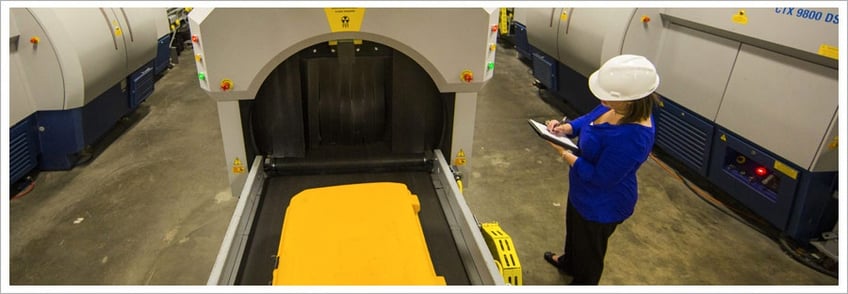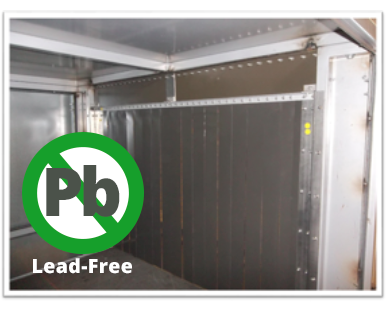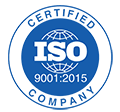 Despite the declining popularity of lead-based products, RoHS compliant products are still not universal in the workplace. According to OSHA.gov, “approximately 804,000 workers in general industry and an additional 838,000 workers in construction are potentially exposed to lead.”
Despite the declining popularity of lead-based products, RoHS compliant products are still not universal in the workplace. According to OSHA.gov, “approximately 804,000 workers in general industry and an additional 838,000 workers in construction are potentially exposed to lead.”
These exposure incidents are caused by the production, use, maintenance, recycling, and eventual disposal of materials and products containing lead. In fact, lead exposure occurs in many different industry sectors including manufacturing, transportation, construction, trade, recreation, and more.
 The threat of lead poisoning in the workplace still looms over a broad range of industry professionals. Exposure to lead dust can result in a myriad of ailments that range from short-term to life threatening. Affected individuals may develop anything as subtle as chronic fatigue or flu-like symptoms to something more destructive, like severe brain damage caused by lead encephalopathy.
The threat of lead poisoning in the workplace still looms over a broad range of industry professionals. Exposure to lead dust can result in a myriad of ailments that range from short-term to life threatening. Affected individuals may develop anything as subtle as chronic fatigue or flu-like symptoms to something more destructive, like severe brain damage caused by lead encephalopathy.
Many current radiation shielding curtains are made up of a layer of skrim, a layer of lead, and a layer of teflon coating formed as individual strips. Over time, these layers break apart starting with the teflon coating down to the skrim - exposing the outside environment to the potentially toxic lead layer.
Corporate higher-ups are no longer as willing to purchase or distribute lead-based x-ray shielding components, given the hazards they pose. Instead, OEMs and their customers are turning to safer alternatives that are sturdier, lead-free, and wear-resistant. This puts any distributor of RoHS compliant goods at a definite advantage. Is your company among them?
Why You Should Switch to RoHS Compliant Radiation Shielding Curtains:
 RoHS Compliant Radiation Shielding Curtains are single molded.
RoHS Compliant Radiation Shielding Curtains are single molded.
Everything boils down to the simple, convenient design. These sturdy curtains come in the form of a single molded, homogeneous sheet with all slats tied together. This is not only a plus in regards to efficiency and easy mounting, but it also makes this product superior in terms of safety, customization, and economical budgeting.
 RoHS Compliant Radiation Shielding Curtains are cost-efficient.
RoHS Compliant Radiation Shielding Curtains are cost-efficient.
Because these products are built to last, non-lead radiation shielding curtains lower the cost of overall ownership. When you avoid fraying and wear with sturdier material, less general maintenance and fewer replacement curtains are required. If the curtain does need to be repaired or replaced, our simple mounting configurations makes repairing or replacing the curtains a much less time and cost consuming task for technicians.
 RoHS Compliant Radiation Shielding Curtains allow for less parcel jams.
RoHS Compliant Radiation Shielding Curtains allow for less parcel jams.
These unique curtains have a lower coefficient of friction that stays consistent and reduces drag, even in the advent of eventual wear and tear. The material won’t fray or warp, keeping assembly lines and conveyor belts moving smoothly for as long as possible. The coefficient of friction in these curtains is lower than that of vinyl and lead products, making for much less resistance of items entering and exiting the machinery.
 RoHS Compliant Radiation Shielding Curtains are lead free.
RoHS Compliant Radiation Shielding Curtains are lead free.
Lead free equipment in the workplace is simply safer than equipment that isn’t. Not only is it safer for anyone and everyone who comes into contact with the shielding, but it also eliminates any chance of lead exposure for packages, luggage, and people when in use. Even when it comes to disposal, lead-free curtains edge out the existing curtains by offering a safer and simpler alternative.
 RoHS Compliant Radiation Shielding Curtains are customizable.
RoHS Compliant Radiation Shielding Curtains are customizable.
RoHS Compliant Radiation Shielding Curtains are suited to all different types of geometry and can be adjusted to suit a variety of needs. Being this product is a single-molded homogeneous material, rather than a series of layers, buyers can change the surface texture as well as adjust their curtains to the exact the size needed for unique equipment dimensions.
These factors serve all parties involved: OEMs, regulatory agencies, airports, parcel handling companies, technicians, and end-users alike. Safer equipment makes for safer employees and operating conditions, which in turn results in stronger, better businesses. Who do they all have to thank for this positive experience? The OEMs who provide their sturdy, RoHS Compliant Radiation Shielding Curtains.



